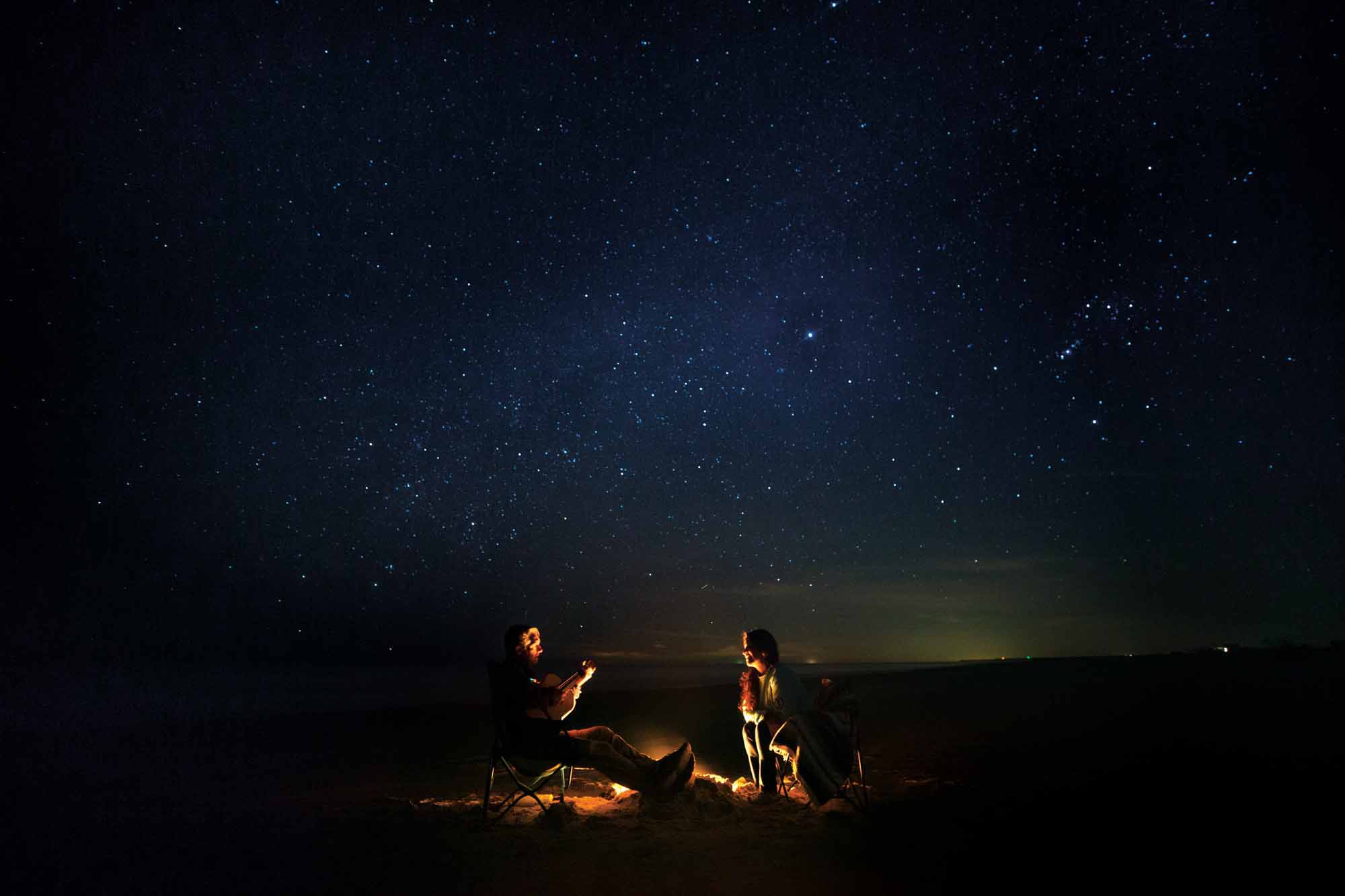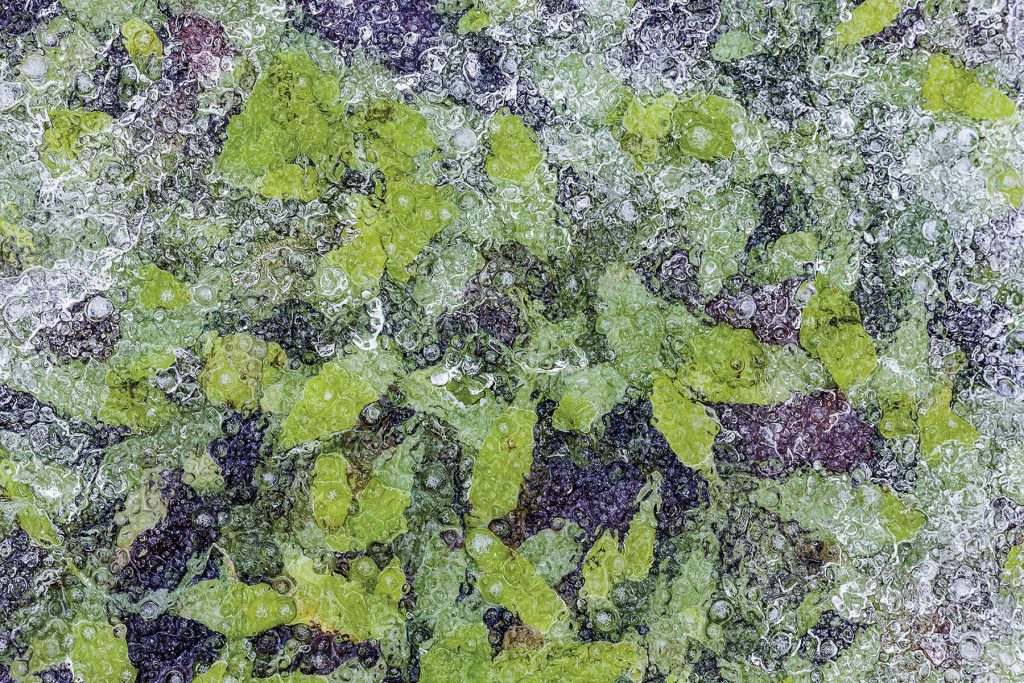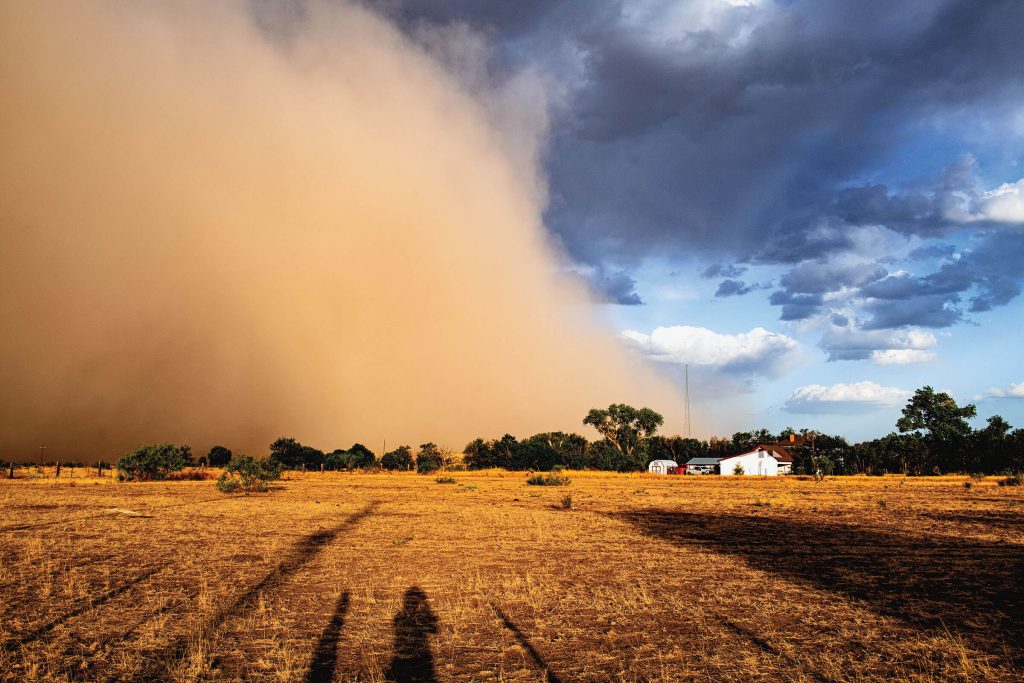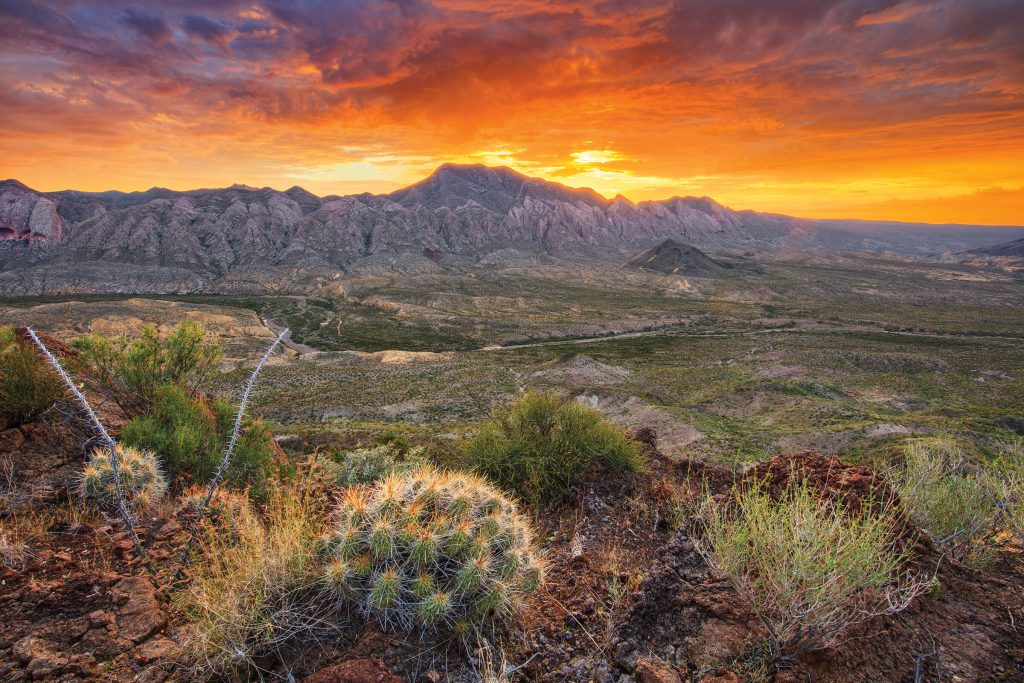In his time as a naturalist at Enchanted Rock State Natural Area, Scott Whitener loved taking kids on night hikes. Whitener had left his previous job teaching in Fredericksburg partly because he wanted to spend more time outside. On treks up the massive granite dome, he encouraged young people to overcome their nerves as they grew accustomed to the dark, their senses sharpening in the absence of artificial light.
A group of high school students from San Antonio made a particularly strong impression. Most of them had never ventured outside the city in their lives; now, they were exploring in the dark and peering at the night sky through a telescope. “When kids see the Milky Way for the first time—that’s a life-changing experience,” Whitener says.
Unfortunately, such experiences are growing increasingly rare. When Texas was still a primarily rural state, light pollution wasn’t an issue on anyone’s radar. As everyone from Gene Autry to George Strait to Pee-Wee Herman has crooned, “The stars at night are big and bright, deep in the heart of Texas.” Today, though, those spangled night skies are a little less stunning than they used to be.
Texas has some of the nation’s highest per-capita rates of nighttime light emission.
Texas’ population is booming and its cities are sprawling. Industry is expanding, particularly oil, natural gas, and wind energy development, all contributors to light pollution. This means more artificial light after dark, and as a result, the state has some of the nation’s highest per-capita rates of nighttime light emission. Across Texas, unshielded or upward-pointing lights contribute to the gradual, diffuse brightening of the night sky, an effect known as “skyglow.” If you’ve ever searched the sky for shooting stars and noticed the night doesn’t seem quite as dark as it used to be, you’ve seen skyglow.
The cumulative effect of bright lights can be felt hundreds of miles away. Big Bend National Park, home to some of the darkest skies in the lower 48, experiences light pollution from as far afield as Del Rio, El Paso, and Midland. These days, the majority of Texans can no longer see the Milky Way at night, according to the Hill Country Alliance, a Dripping Springs-based nonprofit that seeks to preserve the natural resources and heritage of the Texas Hill Country.
The movement to protect our night skies from light pollution has lagged behind advocacy for other elements of the environment. Championing darkness can be a tough sell, says John Barentine, director of public policy for the International Dark-Sky Association (IDA). Based in Tucson, Arizona, IDA is at the forefront of the fight against light pollution. “I can give people facts ’til I’m blue in the face, but that’s not going to move somebody who’s afraid of the dark and who has a gut feeling that more light will make them safe,” Barentine says. “I have to slowly evolve their emotional reaction from seeing darkness as a problem to seeing it as a value that they support.”
Even so, appreciation for darkness has gained traction around the world, and in Texas in particular. Barentine says Texas is a leader in the dark sky movement, in part because the state is home to some of the last night skies that remain pristine—that is, largely unaffected by skyglow. From the remote desert landscapes of far West Texas to the grassy expanses of the Hill Country, Texans are working together to protect our famously starry skies.
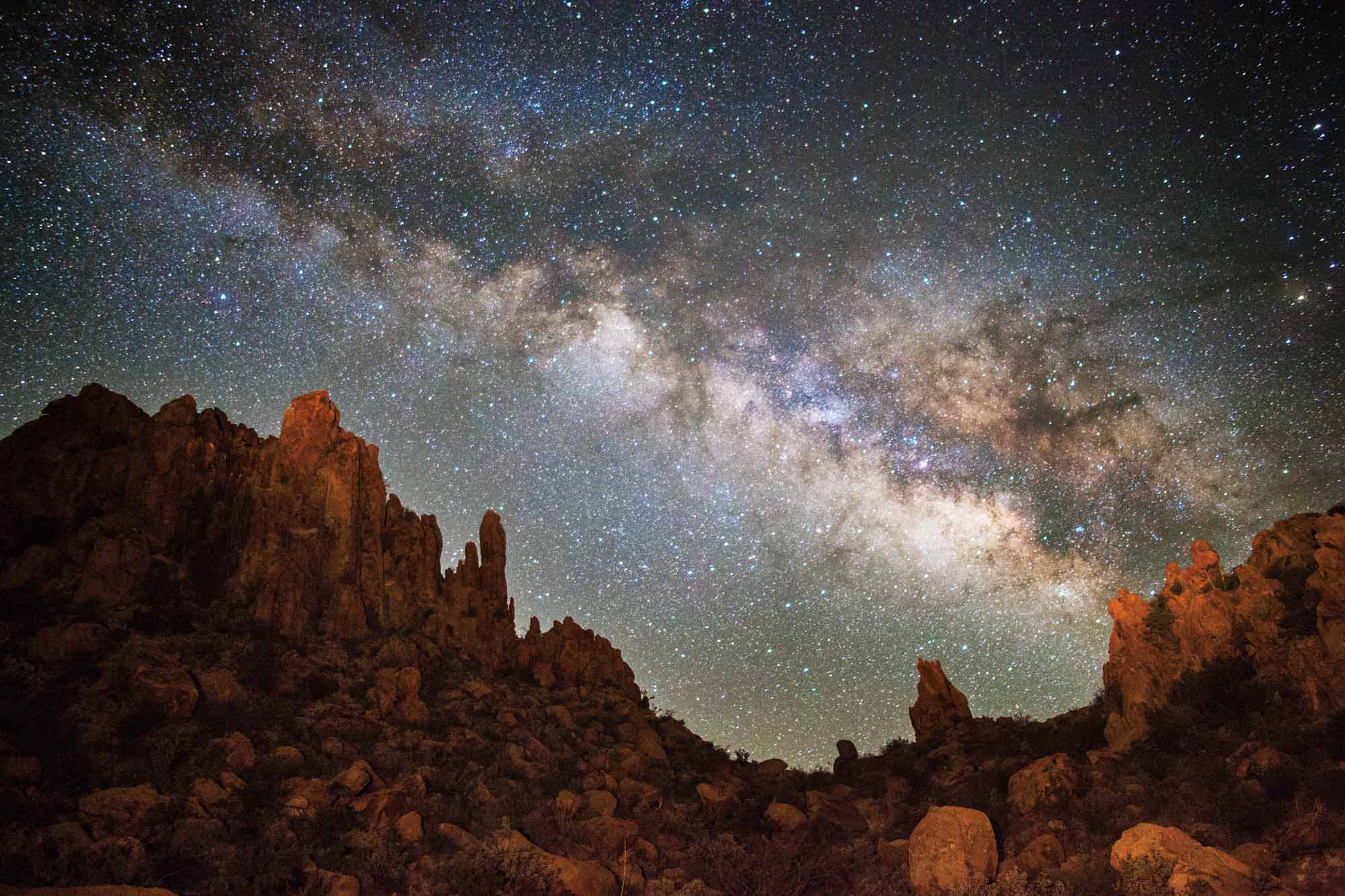
Small-town Campaign
When people think of dark skies in Texas, they often associate them with the vast expanses of West Texas, home of the University of Texas McDonald Observatory, a leading research hub for astronomy. This makes sense; the area has some of the darkest night skies in the continental U.S., and the McDonald Observatory hosts regular tours, star parties, and other events to acquaint the public with celestial bodies.
But you shouldn’t have to drive into the desert to see stunning stars. When Cathy Moreman moved to Wimberley from Houston eight years ago, she loved the peaceful, quiet atmosphere—and the night skies. The Central Texas town, which exists at the confluence of the Blanco River and Cypress Creek, takes pride in its quaint atmosphere, from its annual rodeo to the outdoor walk-in theater to the serene and silent nights. When I visited this summer, I squinted up at the sky, trying to remember the constellations I’d learned about during visits to the McDonald Observatory—Orion, Cassiopeia, and the elongated triangle that represents the horns of Taurus the bull. Moreman told me she has noticed a shift over the past several years as Central Texas—like the rest of the state—has boomed. In 2018 the state added more new residents than any other in the country, many of them in the Austin-San Antonio corridor. Spillover from the growth is palpable in the Hill Country, where the population is projected to double over the next three decades.
Five years ago, Moreman, currently the executive director of the Wimberley Valley Chamber of Commerce, learned that neighboring Dripping Springs had just become the first community in Texas to be designated by the IDA as a Dark Sky Community. The designation recognizes places that have taken steps to preserve night skies, including passing and enforcing an outdoor lighting ordinance, as well as demonstrating community engagement and educating the public about the importance of dark skies.
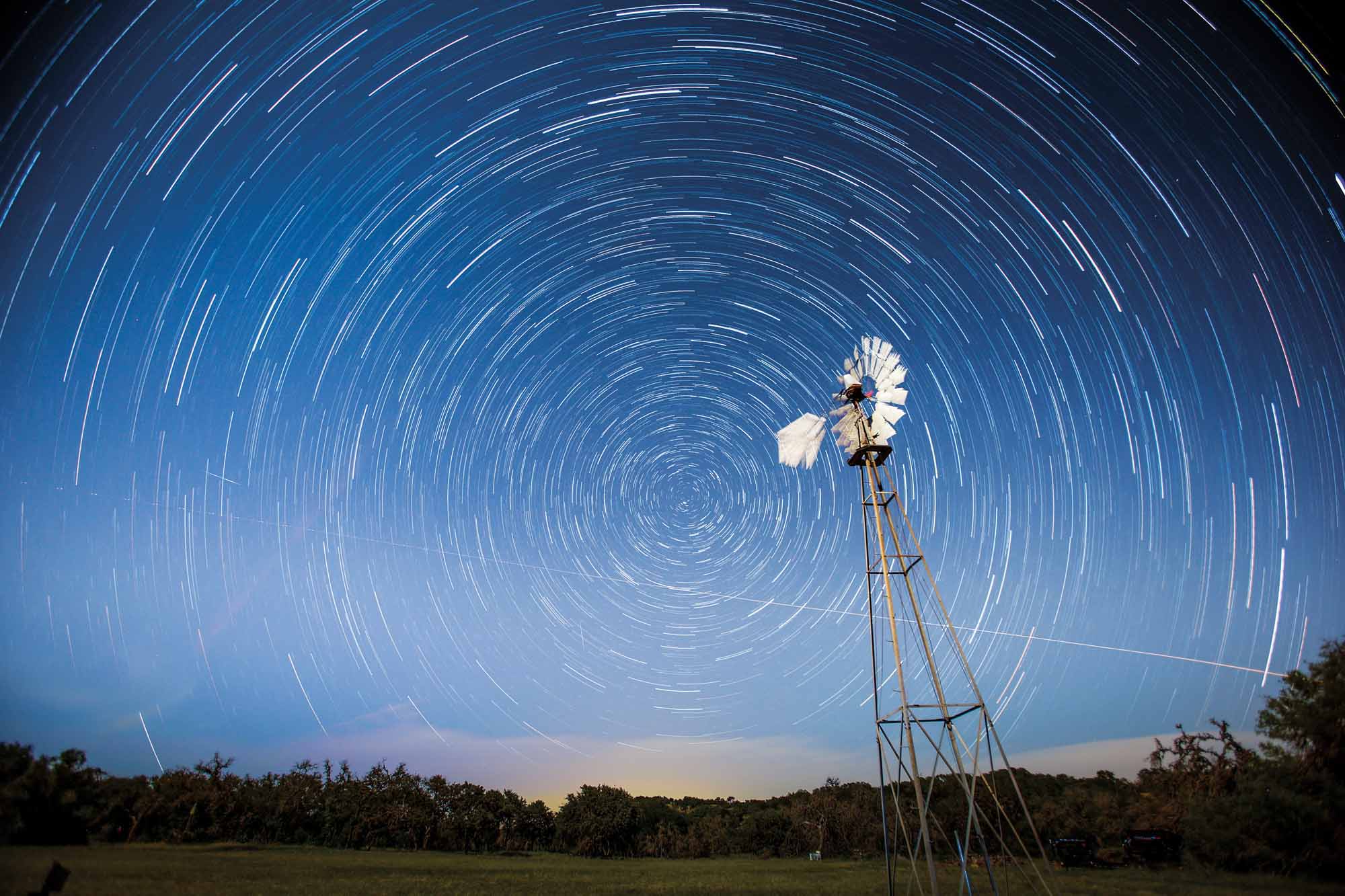
Following in their footsteps, Moreman began working with a group of Wimberley City Council members and citizens “because people do like to visit places where they can see the skies at night, but also because I live here, and I want to protect what I love about it.” The group eventually came to be known as the Wimberley Valley Dark Sky Committee, which formed to help the area attain IDA recognition.
Moreman was concerned about light pollution’s impact on tourism, which is central to the economies of many towns in the Hill Country. “There are a lot of bed-and-breakfasts in the area where people go to get away from the city lights and city noises,” she pointed out.
“Hill Country communities consider the night sky part of their heritage, and they don’t want to lose that.”
She also learned that exposure to artificial light at night has been shown to have damaging effects on human health. Overexposure to bright lights—particularly those with a bluish tinge—disrupts our innate circadian rhythms, according to the National Sleep Foundation. It’s been linked to a suppression in the production of melatonin, a hormone that plays an important role in regulating the thyroid system, and contributes to increased risks for obesity, depression, and sleep disorders, according to a study published in the Journal of Clinical
Endocrinology & Metabolism.
Dark skies benefit non-human populations, too: Animals rely on their circadian rhythms when mating, migrating, and hunting. Artificial light disrupts these processes in ways scientists are only now beginning to understand. It doesn’t merely impact nocturnal animals, such as bats and frogs, but also species ranging from monarch butterflies to songbirds. Fireflies, those icons of long summer evenings, flash less often when in the presence of artificial light, a study from the University of Virginia found. And researchers have seen that light pollution can hurt insects’ ability to communicate and reproduce, according to a review in the scientific journal Ecology and Evolution.
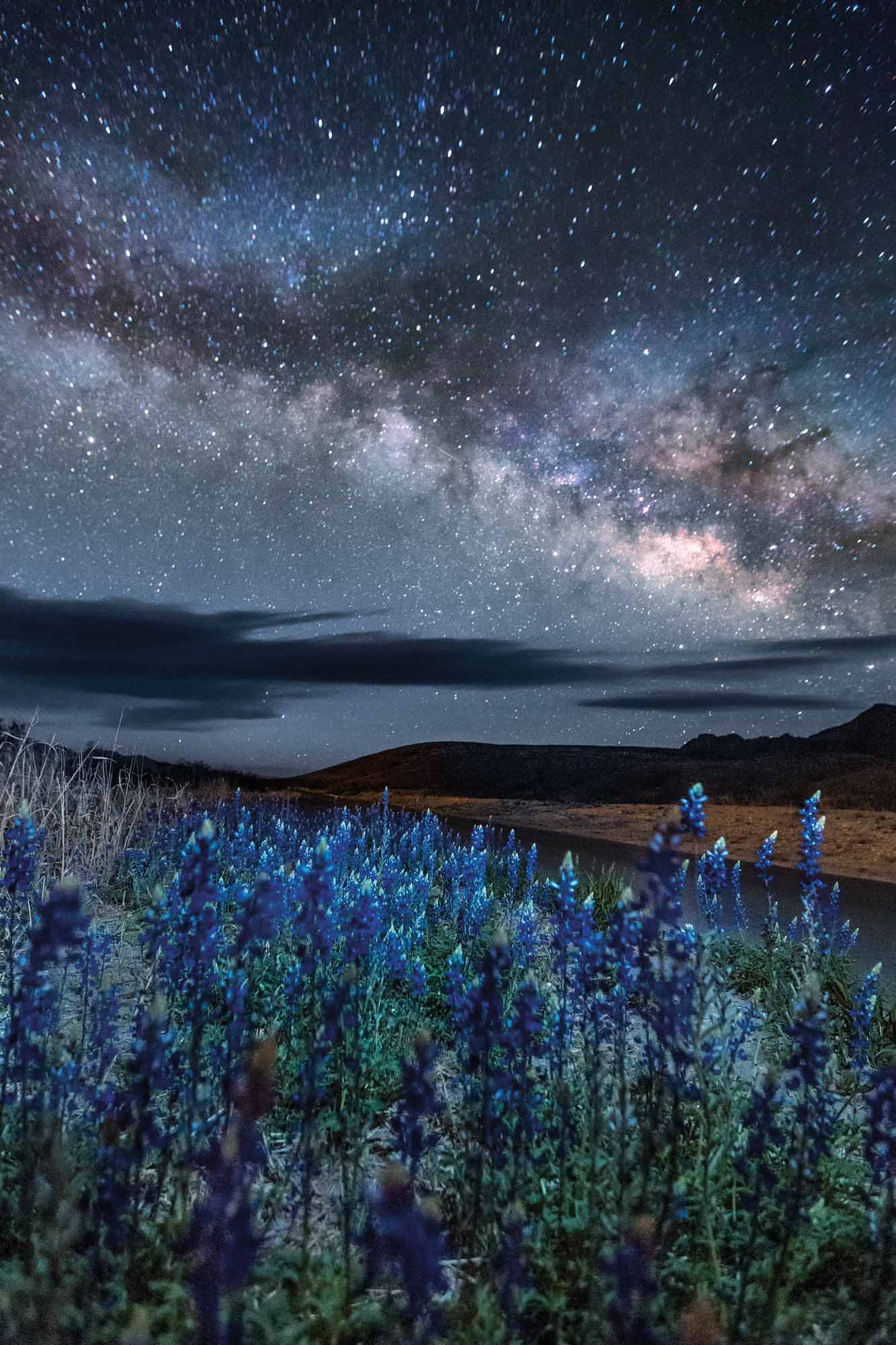
Moreman and her fellow dark-sky advocates began talking to their neighbors and local business owners about simple fixes, such as turning off lights at night or, for lights that must remain on, shielding them so the glare is pointed down. It’s also best to use lights that are neither too bright nor too cool. Cool-toned lights, including most LED bulbs, emit light at wavelengths that are more disruptive to wildlife and human health. “It’s just about making people aware,” Moreman says.
While Wimberley achieved IDA dark-sky recognition in 2018, not everyone is on board with the fight to keep skies dark. Some Hill Country residents keep their yards and homes well-lit at night for security reasons. But a number of studies have found that brightly lit environments don’t necessarily improve safety; sometimes, in fact, they have the opposite effect. Bright lights create a strong contrast between lit areas and their unlit surroundings, which makes it more difficult to see what’s happening in the shadows. A study done by Chicago’s Alley Lighting Project found more crime associated with brightly lit alleyways, contrary to expectations. It’s also true that bright lights don’t necessarily make roadways safer; badly designed or poorly aimed lights can temporarily blind drivers.
Up to half of residential outdoor light is wasted, meaning unshielded or poorly aimed.
The kind of lighting that dark-sky advocates prefer—shielded fixtures that point light down, not up—don’t cause the kind of glare and contrast that impair vision. Making sure outdoor lights are dark-sky friendly also has economic benefits. From 20 to 50 percent of all outdoor light is wasted—that is, unshielded or poorly aimed—amounting to $3.5 billion a year in energy loss for outdoor residential lights alone, according to the IDA.
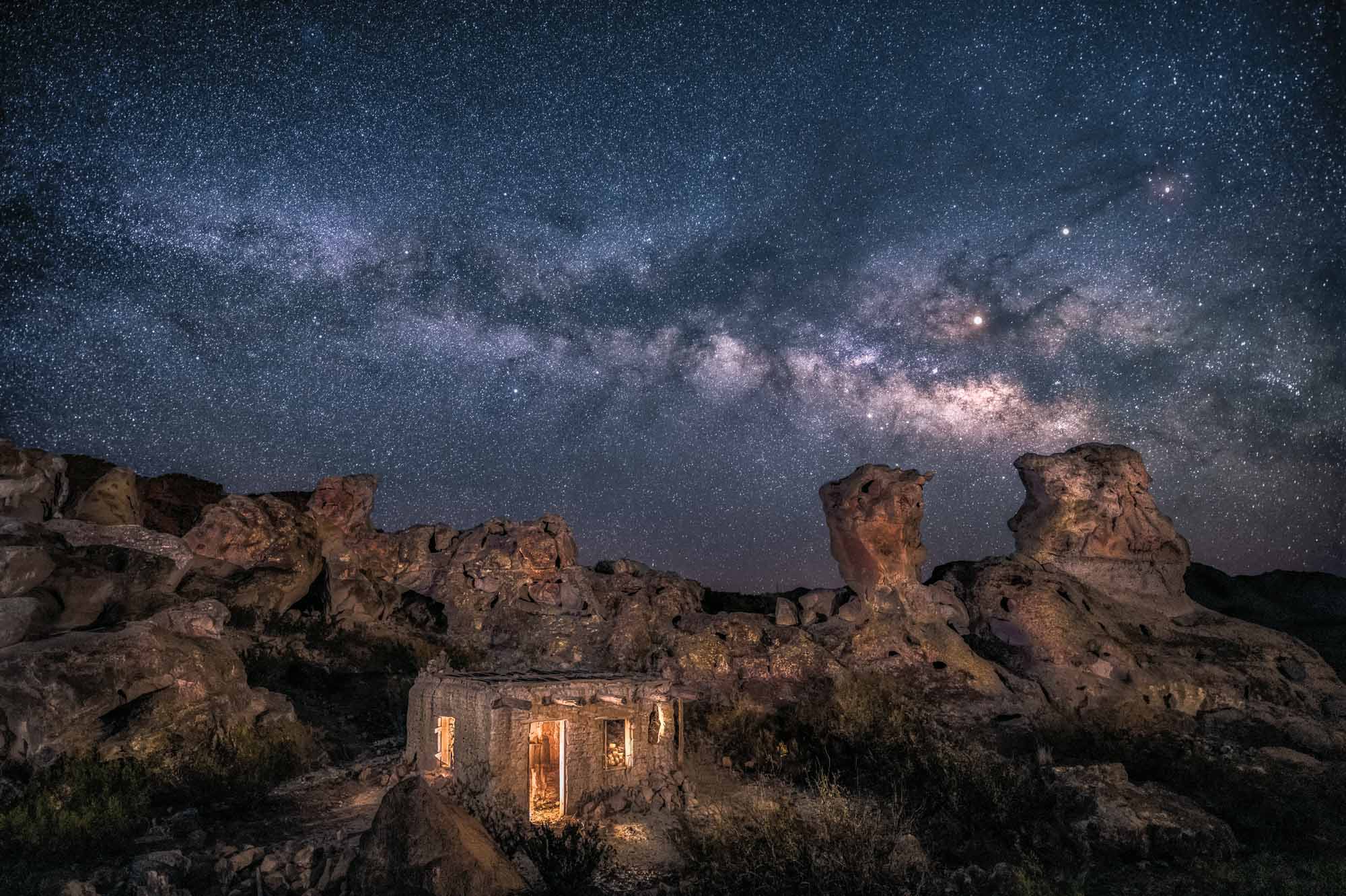
Dripping Springs has worked to help corporations minimize their light pollution. When Home Depot announced plans to build a big-box store in the town, it was subject to regulations aimed at reducing glare and light trespass. “The lighting company initially said, ‘We can’t do that,’” recalls Cindy Luongo Cassidy, a consultant who works with the town. Cassidy pressed them to find a solution, and within 48 hours, they had come up with a new light-shield design that’s now considered standard. When H-E-B planned a grocery store and gas station in nearby Wimberley, that town’s dark-sky committee helped the company reconfigure its lighting to be better shielded and more efficient. It now uses half the wattage of the original plan.
Dark-sky advocacy is spreading throughout Hill Country communities. Thirteen Hill Country counties have adopted resolutions supporting the preservation of nighttime darkness. And two-thirds of the region’s population (excluding the cities of Austin and San Antonio) live in unincorporated areas. However, as it stands now, Texas law prevents counties from adopting ordinances regarding outdoor lighting.
“Most kids living in a city have no idea that there’s anything in the sky other than the moon. You can’t experience nature to its fullest if you can’t see the Milky Way or identify Saturn on a dark night.”
“The population growth in unincorporated areas presents a very strong rationale for revisiting these questions,” says Cliff Kaplan, a program manager for the Hill Country Alliance. “How long can counties go with so little authority before their natural resources are depleted and they become undesirable places to live?”
Even though Texas counties have limited authority over lighting, Hill Country communities have “made progress by leaps and bounds,” notes Barentine, of the IDA. “They consider the night sky part of their heritage, and they don’t want to lose that.” He noted that alliances have formed among people who may not see eye-to-eye politically, but share concern for the importance of dark night skies.
Of the 23 IDA Dark Sky Communities in the United States, three are in the Hill Country. Others may join that list soon. Such activity is still largely concentrated in West Texas and the Hill Country, but Moreman hopes other municipalities will learn about the Wimberley Valley’s successes and feel inspired. “Blanco’s working toward it, and I got an email about it from Buda the other day,” she says. “Everyone is interested. It’s an idea that’s growing—and it’s great to be a part of it.”
Dens of Darkness
Because so many Texans travel to state parks to immerse themselves in nature, these preserves play a key role not just in protecting dark skies as a natural resource, but also in educating the public about the dangers of light pollution. In 2016, Whitener, the former Enchanted Rock naturalist, moved to become the superintendent of the 2,600-acre South Llano River State Park in the western Hill Country near Junction, about 60 miles west of Fredericksburg. As a native of Houston and a longtime resident of the Hill Country, he was concerned about the impact of population growth.
“Places like Junction that really used to be in the middle of nowhere aren’t anymore,” he tells me. “The cities keep spreading out, getting bigger and bigger. Fredericksburg’s population has exploded. Dripping Springs is going to be eaten up by Austin. Pretty soon it’s going to be one big metroplex. It’s getting bigger and brighter everywhere you go.”
Barentine points to Las Vegas as a cautionary tale: From the South Rim of the Grand Canyon in neighboring Arizona, the glow of Las Vegas is visible on a clear night. “These decisions made in cities are impacting parks,” he says. If something doesn’t change, Barentine warns, “cities will get progressively brighter, and the remaining parts of the country that currently experience natural darkness—in Texas, parts of East Texas, parts of the Panhandle—that natural darkness is going to be squeezed out of existence.”
At South Llano River State Park, increased traffic, a new pipeline project north of Interstate 10, and Junction’s growth have all had an impact on the park’s night sky.
Whitener is doing what he can to counter light population. Starting in 2016, South Llano began to get rid of unnecessary lights at night and shield others. Whitener worked with Junction to minimize artificial lighting as well. The park also hosts regular events educating the public about the value of the night sky and periodically takes measurements of the skyglow around the park. When a strobing light at the top of a distant radio tower a dozen miles away disrupted the darkness—“It looked like there was a rave going on in the sky,” Whitener says—he had to call the Federal Communications Commission to get it shut off.
As Whitener sees it, South Llano State Park’s work to cut down on light pollution is beneficial to both the park and the community. The park’s reputation for dark skies attracts stargazers and dark-sky photographers. “They’re a good group,” he tells me. “Amateur astronomers don’t tend to be a rowdy bunch.” The changes also make economic sense. “It doesn’t cost any money to take out lights, to use less electricity.”
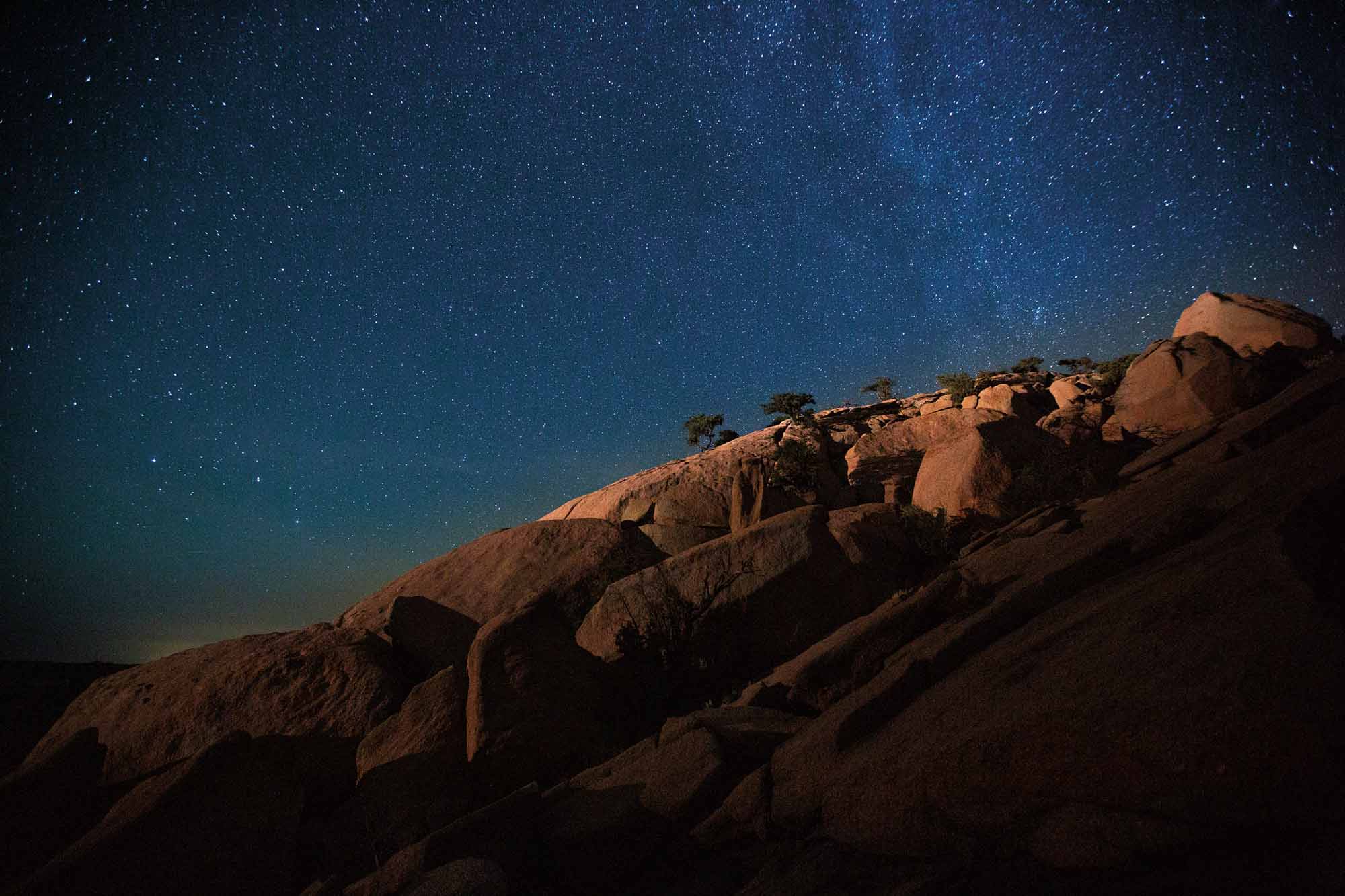
The park has taken steps to encourage awareness among its visitors. Tourists are invited to attend regular star parties, where they can peer through telescopes at distant celestial objects and listen to stories about the constellations. Park rangers host night hikes, where they encourage people to tune into their senses. Kids can borrow a Night Sky Explorer Pack, which includes binoculars, constellation cards, a star chart, and a red flashlight. (Red light allows for enough light to see without disrupting night vision.) Whitener hopes people who experience the beauty of a star-spangled sky at South Llano will be motivated to consider light pollution when they return home.
During a recent visit to the park, I hiked for a mile and a half, then pitched my tent in one of the backcountry campsites. It was the middle of the week, and Whitener had told me I would have the park to myself. As night settled in, I began to get anxious. I was alone in the dark, and every rustle of the leaves made my heart thump with rising anxiety. But then I remembered what Whitener had said just a few hours earlier: “Most kids living in a city have no idea that there’s anything in the sky other than the moon,” he told me. “You can’t experience nature to its fullest if you can’t see the Milky Way or identify Saturn on a dark night. It’s something we’ve gotten away from, and we’re trying to retrain people. We’re trying to grow new stewards of the night sky.”
What if the dark was not something to be afraid of, but rather to appreciate? I stretched back and regarded the sky anew. I thought about what a gift it was to be able to see the stars so clearly, and to feel so small in such a satisfying way.
Texas Dark Sky Places
The Arizona-based International Dark-Sky Association recognizes places for their efforts and success at maintaining dark skies. Here are the classifications as they apply to Texas sites:
Dark Sky Communities have shown “exceptional dedication to the preservation of the night sky,” including public-education efforts and rules for outdoor lighting.
Dripping Springs, 2014
Horseshoe Bay, 2015
Wimberley Valley, 2018
Dark Sky Parks must be an “exceptional dark sky resource” with strict standards for sky brightness (sky brightness must be routinely equal to or darker than 21.2 magnitudes per square arc second):
1. Big Bend National Park, 2012
2. Copper Breaks State Park, 2014
3. Enchanted Rock State Natural Area, 2014
4. Big Bend Ranch State Park, 2017
5. South Llano River State Park, 2017
International Dark Sky Sanctuaries—the IDA’s most rigorous designation—recognizes natural areas in exceptionally remote areas, with even stricter standards for sky brightness (sky brightness must be routinely equal to or darker than 21.5 magnitudes per square arc second): Devils River State Natural Area near Del Rio, 2019
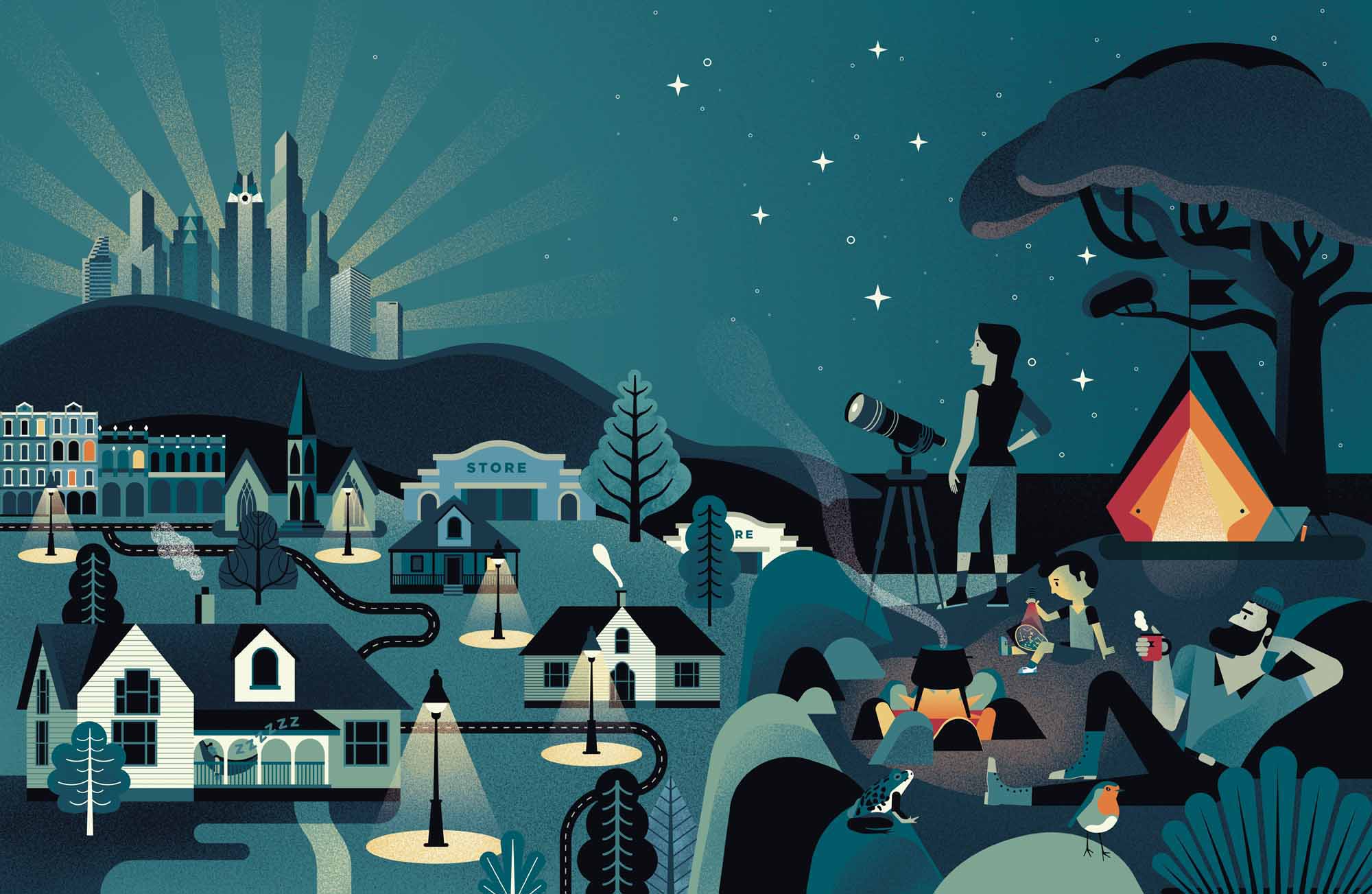
Home to some of the last remaining pristine night skies, fast-growing Texas is a leader in the dark-sky movement.
- Across the state, unshielded or upward-pointing lights contribute to the gradual, diffuse brightening of the night sky, an effect known as “skyglow.”
- Overexposure to bright lights at night—particularly those with a bluish tinge—disrupts our innate circadian rhythms.
- Residents can assist in their communities’ dark-sky efforts by turning off lights at night and/or using shielded lights.
- Dark-sky ordinances reduce light pollution by requiring outdoor lighting to be shielded to reduce glare and light.
- Artificial lights affect animals’—bats, frogs, monarch butterflies, and songbirds—ability to mate, migrate, and hunt. Light pollution also hurts insects’ ability to communicate and reproduce.
- Community education efforts include star parties where attendees can peer through telescopes at distant celestial objects and listen to stories about the constellations.
- At South Llano River State Park, kids can check out a Night Sky Explorer Pack. The pack’s red flashlight makes enough light to see without disrupting night vision.
Dark Sky Events
Many parks and natural areas in Texas host events that can help you get a closer look at our night skies:
McDonald Observatory Star Parties
Guided constellation tours and stargazing parties are held in the telescope park on Tuesday, Friday, and Saturday evenings.
mcdonaldobservatory.org
South Llano River State Park Night Hikes
Explore the park after dark during a ranger-led mile-and-a-half hike, enjoy the stars, and look for nocturnal creatures. Dec. 7. tpwd.texas.gov/state-parks/south-llano-river
Dripping Springs Texas Night Sky Festival
Held biennially in March—next in 2021—this celebration features storytelling, yoga under the stars, solar observations, and a night sky advocate’s workshop. facebook.com/texasnightskyfestival
Big Bend National Park A Park Ranger’s Guide to the Galaxy
Rangers and volunteers interpret the night skies for visitors. Check the program schedule for the next event. nps.gov/bibe
Wimberley Blue Hole Star Party
Peer through telescopes and spot constellations during this semiregular event. facebook.com/blueholeregionalpark
Copper Breaks State Park
The park offers occasional nighttime events, including night-sky photography workshops and guided sky-viewing. facebook.com/copperbreaks
